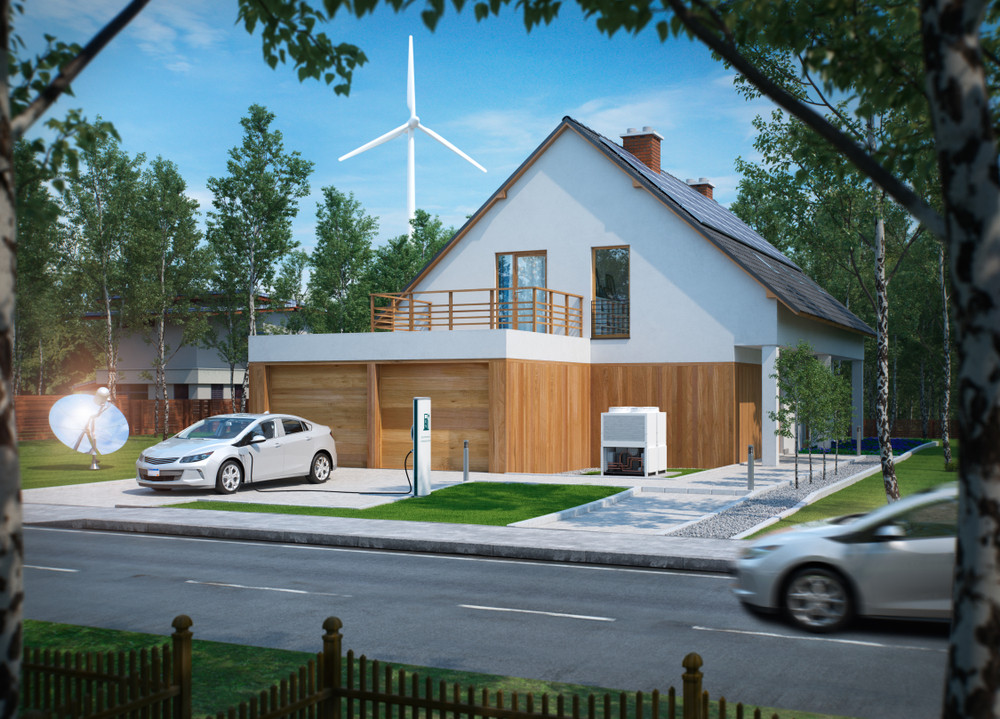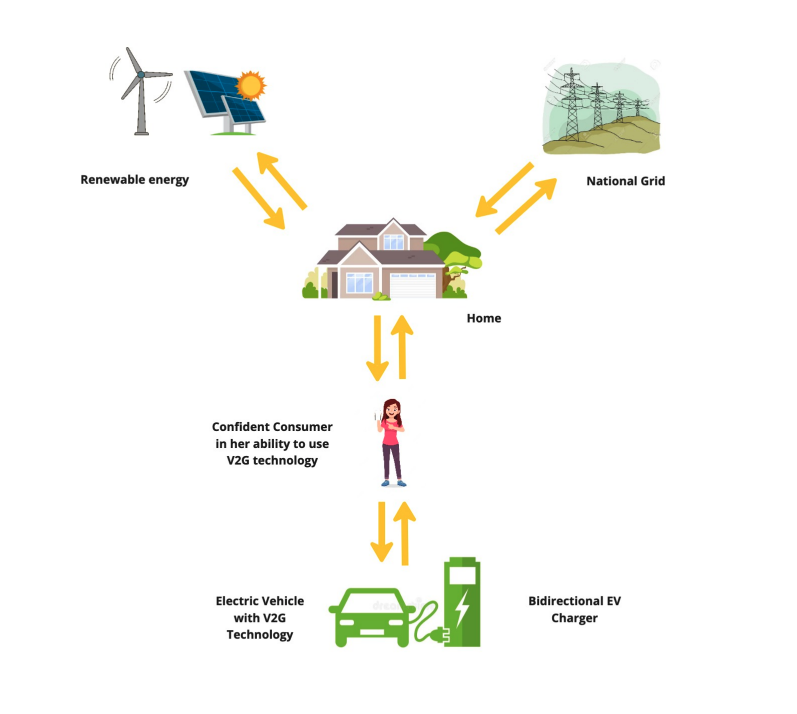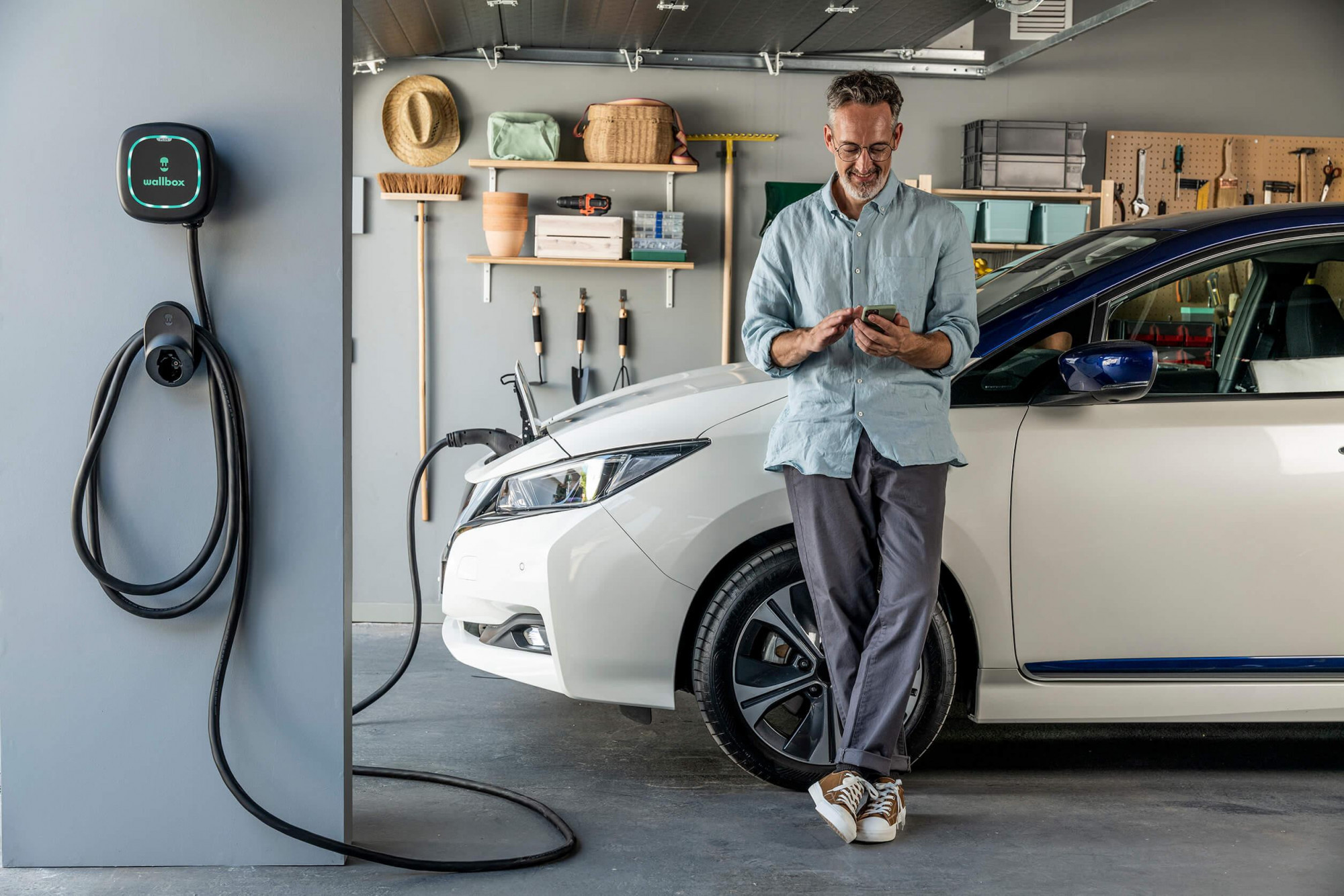EV Charging: is V2G a game changer? Not without the consumer
The Electric Vehicle (EV) market is growing, fast.
In January 2022, EV’s represented 12.5% market share. By December, this increased to 32.9%.
The growth of the market is expected to continue to climb, as the UK prepares to ban sales of new petrol and diesel cars by 2030.
Vehicle to Grid (V2G) smart charging technology could be a game changer for the EV market but what are the key factors that will ensure it'll be a success?

The market is expanding, yet as this occurs on a wider scale, barriers persist that could hinder growth. Investment in charging infrastructure is ongoing, such as a recent £50 million investment from Motor Fuel Group to boost EV charging across the UK, installing 360 ultra rapid chargers. Despite this, the roll out of public charge points is failing to keep up with demand. The ratio of chargers to EVs in Q4 2022 was 1:62, compared to a much higher ratio of 1:42 in the same period of 2021.
Cost also remains a barrier. Last year, the UK was ranked the 10th most expensive country to buy an EV. The volatile market, and rising prices of electricity has subsequently increased the price to publicly charge an EV. Research by RAC showed that the average cost of a rapid charger increased by 50% between May 2022 and January 2023. The increase has meant using a rapid charger may even cost the driver more than a petrol car. An EV with a 64kW battery would pay around 20p per mile to get to 188 miles of range, whereas an equivalent petrol car would cost 17p per mile.
The diverging market could have a large impact on the adoption of EVs. Recent research conducted by Paythru outlined that poor charging experience could put 80% of UK drivers off driving an EV. To keep enthusiasm for EVs at pace, infrastructure that streamlines the consumer experience is essential. It is not just about setting up more charging points, it is about getting the whole process right.
Smart charging technology is at the forefront of the EV infrastructure market and could be part of the solution to revamp the consumer experience. Smart charging means when the vehicle is charging, it is communicating with the charging operator, and utility company, through energy data. The sharing of data allows consumers to optimise charging remotely, choosing to charge outside of expensive energy times, taking control of their energy usage and capitalising on energy tariffs.
Vehicle to Grid technology is a smart charging initiative that takes charging to even more efficient levels. V2G allows electricity to flow bidirectionally, from the grid into the vehicle, and from the vehicle back into the grid. V2G technology will enable EVs to essentially become mass power banks, tapping into the idle energy of vehicles which are stagnant for 96% of their life cycle. Instead of depleting our energy, V2G has the potential to make transformational change while also revolutionising the user experience, making charging the most effective, efficient and convenient experience.

There are key benefits to V2G charging which set it apart from other smart charging technologies:
1. Profit
Energy captured in the EV can be sold back to the national grid. A V2G trial conducted recently by a consortium of businesses including OVO Energy, Kaluza and Indra identified that some EV drivers saved up to £800 per year on energy.
2. Leverage Energy Tariffs
V2G allows EVs to charge during off-peak times, and give back to the grid during peak hours, when there is more energy demand.
3. Reduce Pressure on National Grid
As the sector has an increasing reliance on the national grid, balancing the strain on the grid will become more vital. V2G technology has the potential to take pressure off the grid by increasing flexibility, where consumers can store energy in the EV when there is excess supply, using this to power their home during peak hours.
4. Integration of Renewable Energy
V2G charging can be used for renewable load following. It enables excess solar and wind energy to be captured and stored, to be made available when there is high demand, or low energy production.
Smart charging is projected to boom, with V2G the pivot. In 2021 the global V2G technology market was around $1.7 billion USD, expected to increase to $17.3 billion USD by 2027. While conversations around V2G are not necessarily new, the technology is still in trial phases. The European market is leading the charge, and the UK has the potential to be at the forefront due to the number of advanced programmes trialling the technology. Some of the key players include Volkswagen, OVO Energy, Nissan and Nuvve. However, due to the complexity of the technology, it will still be another few years before we see V2G roll out to commercial scale. There is an opportunity to stay ahead of the curve, and ensure that market readiness is aligned with the user experience.
The intricacy of EV technology, particularly V2G, threatens to overwhelm the consumer and convert into a genuine barrier to entry for most first-time EV buyers. As we have said at Mima before, to really entice people to go electric, the whole consumer experience needs to be seen as enjoyable and valuable. V2G can be one solution at the front of this, if a seamless user experience is delivered from the outset.

The cycle of effective V2G charging includes the customer at the centre.
To unlock the full potential of V2G, Mima proposes two essential elements:
1. Establishing a Seamless Customer Experience
2. Collaboration and Partnerships
Establishing a Seamless Customer Experience
Consumers have an appetite for this market too. A recent study from Shell outlined that consumers are excited about the evolving smart charging technology; 79% of drivers reported they would use smart charging and 66% would take part in vehicle-to-grid charging. Yet the charging experience remains a prominent barrier to adopting any EV technology.
The market is currently fragmented and the consumer experience is not being prioritised. Currently, the average EV user has to download around eight apps in order to manage their EV and the different charging requirements and costs. As the scale of EVs surpasses early adopters, we need to build customer confidence from the outset. This means centralised technology where users can set up and manage all of their home and away charging requirements, as well as educating customers on how the software works.
Technology that allows the user to:
- Access energy markets to capitalise on energy tariffs
Ability to set the charge rate so customers know they are on the best tariff available is highly important. E.g. The OVO Drive Anytime platform allows charging for 10p/kWh instead of a default rate of suppliers, up to 34p/kWh. Customers need this information accessible at the set-up-stage to make informed decisions.
- Sell energy back to the grid
Cost savings and profit are a large incentive for adopting V2G technology. Users should be able to easily connect with suppliers that offer the best rates, as opposed to having to navigate through comparison websites.
- Store energy
Allowing customers to easily set the time of charge to ensure the EV is charged to optimum capacity for when the EV is needed to be driven. Additionally, being able to monitor and visualise excess energy stored and view the discharging of energy contributes to the empowerment of EV owners.
- Access renewable energy
Coordination with renewable energy community networks will be vital to allow customers to easily transition from charging from the grid, to using renewable energy sources.
As the infrastructure and technology get more complex, we cannot lose sight of the user who will adopt these energy solutions. Ensuring customers are educated on how to use the technology will increase their trust in their EV, enhancing optimisation of V2G technology, as users will be capable of maximising the benefits of their EV, for as long as possible.

Collaboration and Partnerships
The way the industry interacts over the next few years will also be pivotal to the global takeoff of V2G. Close collaboration and partnerships are essential to lobby for the changes needed to release the full potential of V2G.
The Government has invested in several smart charging initiatives that incorporate varying elements of V2G technology. However, V2G technology encompasses all of these smart energy initiatives, and offers solutions to the growing problems of an electrified nation, making optimal use of the existing population of vehicles. Businesses developing different initiatives need to collaborate to deliver efficient streamlined V2G technology.
The INFLEXION initiative is an example of the type of collaboration the industry needs if it is going to move as quickly as we need it to. Volkswagen Group UK, OVO and Indra Renewable Technologies have collaborated to deliver a proposal to unleash the full potential of V2G. Drawing on varying sector expertise, the consortium is developing business models and customer propositions to increase EV adoption. Infrastructure is crucial, yet these partnerships will be the pathway to success.
Wide Scale rollout of V2G is a complex challenge. Succeeding in it will not only benefit customers by reducing their energy bills and carbon footprint but also help achieve a resilient energy transition.
Ensuring consumer experience is prioritised in line with infrastructure is necessary to continue EV adoption at pace. V2G is not the only solution to ensure we move fast enough to reach the 2030 goals. There are many technologies and other initiatives emerging, which are key to solving the complex web of transitioning to an electrified nation. Reducing the cost of charging and ownership is also essential, as price is an unfair barrier to adoption. Lowering the initial cost of an EV will be vital, so they are attainable for all socio-demographics. Other initiatives include decreasing the cost of rapid charging, by decoupling the wholesale price of electricity from gas, so those who cannot charge their EV at home are still able to do so cost effectively.
Whatever the combination of answers is, prioritising collaboration and streamlining the customer experience will ensure enthusiasm for EVs remains high, in the run-up to 2030.
Written by:

Lily McDougall
Lead Marketing and New Business Associate
Lily has a Masters degree in Politics, Philosophy and Economics, with a keen interest in understanding the why behind people’s behaviors. Recently moved from New Zealand, Lily has experience in policy and place-based research in the design sector.
Lily is passionate about community development and continues to seek opportunities that have a real and positive impact on our people and planet.